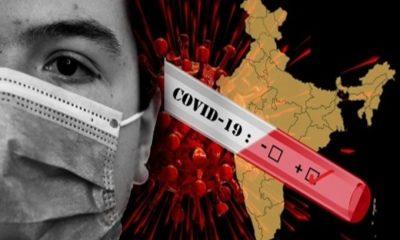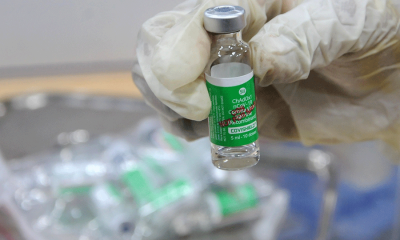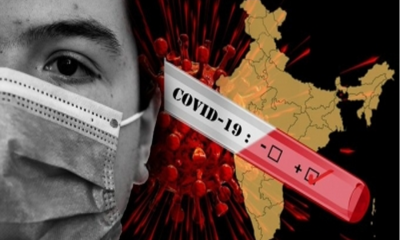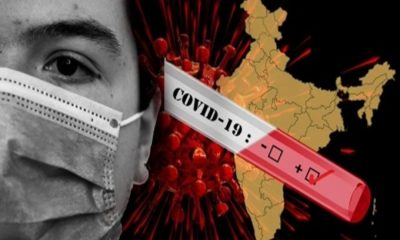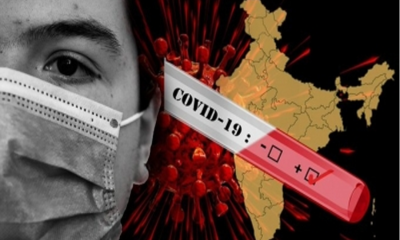General
India logs 2,119 new Covid cases, 10 deaths
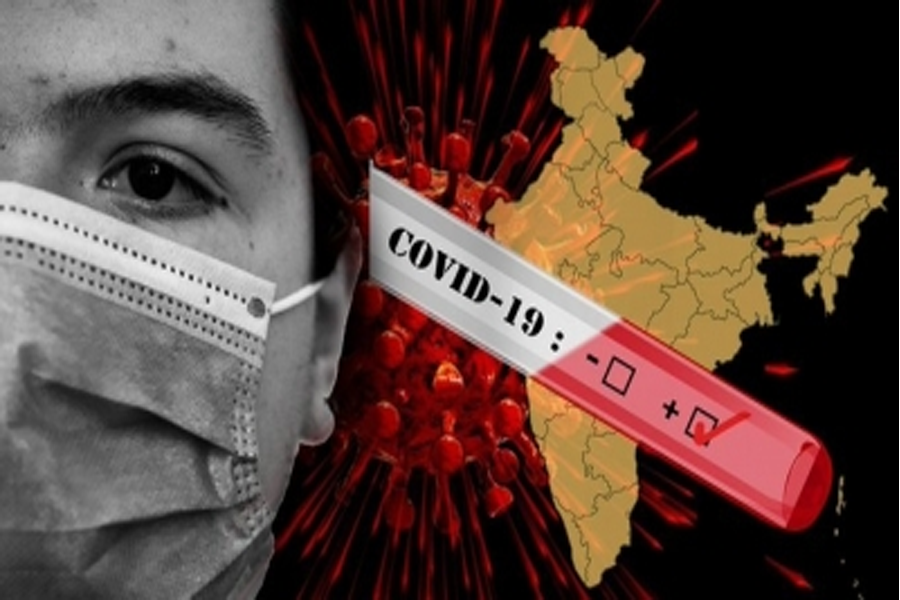
India logged 2,119 new Covid-19 cases and 10 deaths in the last 24 hours, the Union Health Ministry said on Friday.
The new deaths took the overall fatalities to 5,28,953.
The active caseload at 25,037 accounts for 0.06 per cent of the country’s total positive cases.
The recovery of 2,582 patients in the last 24 hours took the cumulative tally to 4,40,84,646. Consequently, India’s recovery rate stands at 98.76 per cent.
Meanwhile, the daily and weekly positivity rates stood at 1.13 per cent and 0.97 per cent, respectively.
Also in the same period, a total of 1,88,220 tests were conducted across the country, increasing the overall tally to over 89.96 crore.
As of Friday morning, India’s Covid-19 vaccination coverage exceeded 219.50 crore.
Over 4.12 crore adolescents have been administered with a first dose of Covid-19 jab since the beginning of vaccination drive for this age bracket.
Maharashtra
Insulting and objectionable comments on farmers, commotion in the Assembly, Congress leader Nana Patole suspended for a day, determined to continue the fight.
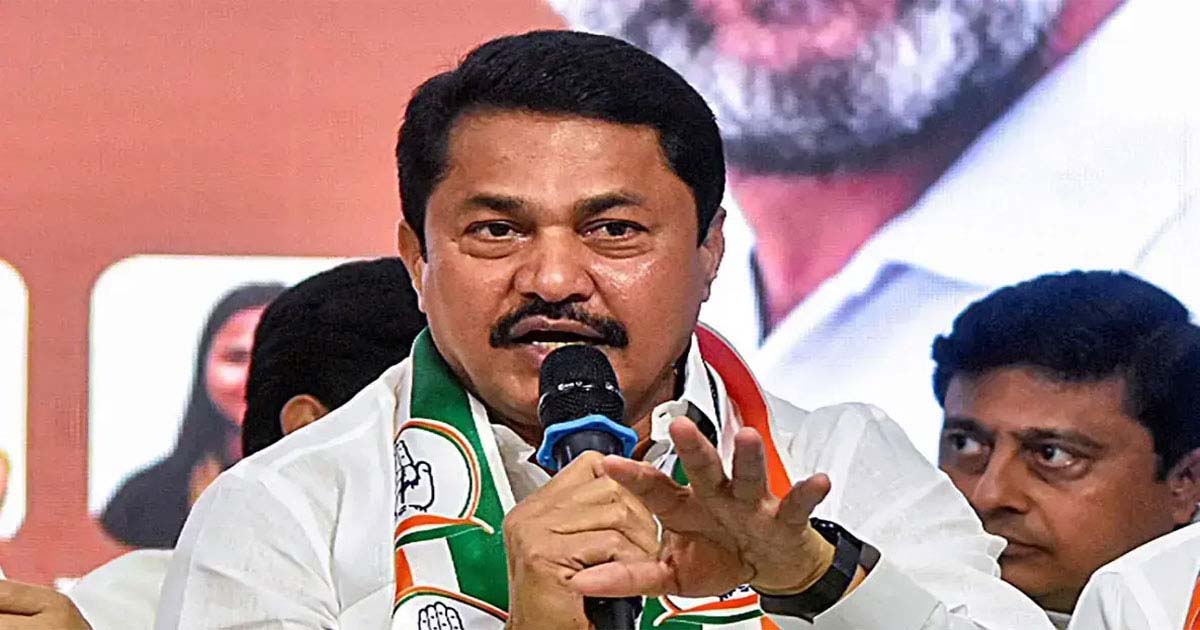
Mumbai: Senior Congress leader and MLA Nana Patole has been suspended from the assembly proceedings for a day for protesting in front of the speaker’s podium in the Maharashtra Legislative Assembly against the ruling party’s derogatory and objectionable remarks on the farmers’ issue. Nana Patole had protested in the house against the derogatory remarks against farmers, after which this action has been taken. The derogatory remarks against farmers had led to a ruckus in the house.
The House was rocked by a ruckus after Agriculture Minister Manikrao Kokate and BJP MLA Babunrao Lonekar made derogatory remarks against farmers, alleged Nana Patole. After which Nana Patole and opposition leaders reached the Speaker’s chair in protest, a ruckus broke out and demanded an apology for the remark. Speaker Rahul Narvekar asked the members to maintain order and sit in their seats, but the ruckus continued and Nana Patole was suspended from the Assembly for a day.
Addressing reporters on the ridicule of farmers, Congress leader Nana Patole said that those who insult farmers are given respect and those who fight for the rights of farmers are thrown out of the assembly. Nana Patole criticized the ministers of the state government and the central government and said that today farmers are being treated like beggars. He said that due to unseasonal rains, the crops of farmers have been destroyed and the government has not taken any effective steps to help the farmers and their insurance has also expired. The Congress leader, calling the government anti-farmers, vowed to continue fighting for their rights even after disciplinary action. He said that we will continue to fight against this corrupt and incompetent government even if we have to face suspension every day.
Maharashtra
Demand for action against Mankhurd, Shivaji Nagar, Kurla Scrap and SMS Company. Assurance of action by the Environment Minister in the House on the demand of Abu Asim Azmi
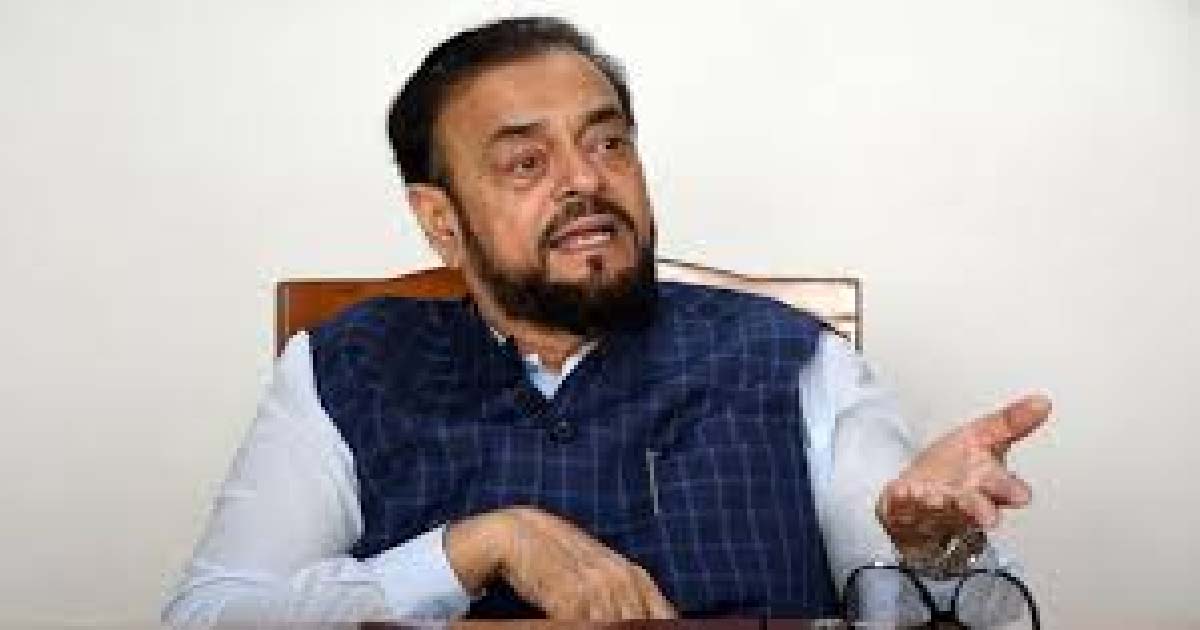
abu aasim aazmi
Mumbai: Abu Asim Azmi demanded strict action against environmental pollution and illegal soap making in Kurla scrap factory in Mumbai Maharashtra Legislative Assembly. Due to air pollution, public life has become unbearable. He told the House that due to pollution from legal Kurla scrap factories and SMS company in Mankhurd Shivani Nagar, the average life expectancy of the residents here has come down to just 39 years. Residents are forced to live amidst dirty, smelly water, air pollution and diseases. Despite this issue being raised in every meeting, the government has not taken any meaningful steps to resolve this issue and no action has been taken. Azmi drew the attention of the minister to this and demanded action as soon as possible, on which during the meeting, Environment Minister Pankaja Munde assured positive action on this serious issue and announced to call a meeting in this regard on Friday. She said that if any illegal activity or factory is going on, action will be taken against it. The local assembly member has also been invited to this meeting.
Maharashtra
SP MLA Abu Azmi Moves Bombay High Court to Quash FIRs Over Controversial Remarks Labeling India as ‘A Golden Sparrow’ Due to Aurangzeb

Mumbai, June 30, 2025 — The controversy surrounding remarks made by Samajwadi Party (SP) MLA Abu Azmi continues to unfold as he has approached the Bombay High Court seeking to quash multiple FIRs registered against him. The filings stem from comments in which Azmi referred to India as ‘a golden sparrow’—a phrase he linked to the Mughal emperor Aurangzeb—drawing widespread attention and sparking debates over the nature of these remarks.
Azmi’s petition argues that his statements have been misinterpreted and taken out of context, claiming they are part of a historical narrative rather than a political statement. He contends that criminal proceedings against him are unjustified and that his freedom of speech should be protected under constitutional rights.
The FIRs, registered across various districts, allege that Azmi’s comments could incite communal tensions and offend sentiments linked to national identity. Critics have accused Azmi of making divisive remarks, while supporters argue that his statements are historical references meant to shed light on past rulers and avoid misrepresentations.
Legal experts suggest that the case revolves around balancing free speech against the potential to incite discord. The court’s decision on whether to dismiss the FIRs could have broader implications for political discourse and expression of historical perspectives in India.
As the matter remains under judicial review, it continues to fuel discussions across political circles and social media, highlighting the sensitive nature of historical narratives and freedom of expression in contemporary India.
-

 Crime3 years ago
Crime3 years agoClass 10 student jumps to death in Jaipur
-

 Maharashtra9 months ago
Maharashtra9 months agoMumbai Local Train Update: Central Railway’s New Timetable Comes Into Effect; Check Full List Of Revised Timings & Stations
-

 Maharashtra9 months ago
Maharashtra9 months agoMumbai To Go Toll-Free Tonight! Maharashtra Govt Announces Complete Toll Waiver For Light Motor Vehicles At All 5 Entry Points Of City
-

 Maharashtra9 months ago
Maharashtra9 months agoFalse photo of Imtiaz Jaleel’s rally, exposing the fooling conspiracy
-

 Crime9 months ago
Crime9 months agoBaba Siddique Murder: Mumbai Police Unable To Get Lawrence Bishnoi Custody Due To Home Ministry Order, Says Report
-

 National News9 months ago
National News9 months agoMinistry of Railways rolls out Special Drive 4.0 with focus on digitisation, cleanliness, inclusiveness and grievance redressal
-

 Maharashtra8 months ago
Maharashtra8 months agoMaharashtra Elections 2024: Mumbai Metro & BEST Services Extended Till Midnight On Voting Day
-

 National News9 months ago
National News9 months agoJ&K: 4 Jawans Killed, 28 Injured After Bus Carrying BSF Personnel For Poll Duty Falls Into Gorge In Budgam; Terrifying Visuals Surface



